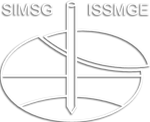Characterizing the Stiffness of Munich`s Tertiary Soils using the TEXAM Presuremeter
Characterizing the Stiffness of Munich`s Tertiary Soils using the TEXAM Presuremeter
This contribution presents the results from TEXAM pressuremeter tests (PMT) conducted at a pile testing site in Munich, Germany. The aim of the PMT testing campaign is to improve the characterization of the tertiary subsoil. The underground conditions at the test site reflect Munichs typical stratrigraphy, consisting of a cover layer of quaternary gravels, followed by tertiary sediments. The tertiary sediments are highly heterogeneous consisting mainly of very dense sand and very stiff to hard clay layers and interlayers, which can be partially cemented. Identifying the different layers and quantifying their mechanical properties, particularly the soil stiffness, are the keys for a sustainable and efficient design of geotechnical structures. At the testing site in Freiham, the TEXAM PMT was used to investigate comprehensively the mechanical behavior of the tertiary sediments in-situ. The investigations were conducted in six boreholes up to a depth of 40 m. Two drilling methods were utilized: water core drilling (WCD) and rotary mud drilling (RMD). As expected, the RMD technique provided better borehole stability compared to the WCD. Nevertheless, at the depths where the borehole was stable for both drilling techniques, the test results were similar. The results show that the TEXAM pressuremeter can capture the variation in stiffness of the tertiary layers in a precise manner. In addition, the pressuremeter limit pressure and stiffness show a strong correlation with small-strain stiffness data obtained from cross-hole tests. The shear stiffness decay with shear strain amplitude can be realistically estimated by evaluating the shear stiffness from unloading-reloading loops from PMT and combining these results with the seismic measurements.
Antal Csuka; Lukas Henzinger; Roberto Cudmani
8th International Symposium on Pressuremeters (ISP2025)
Site Characterization and parameter determination
